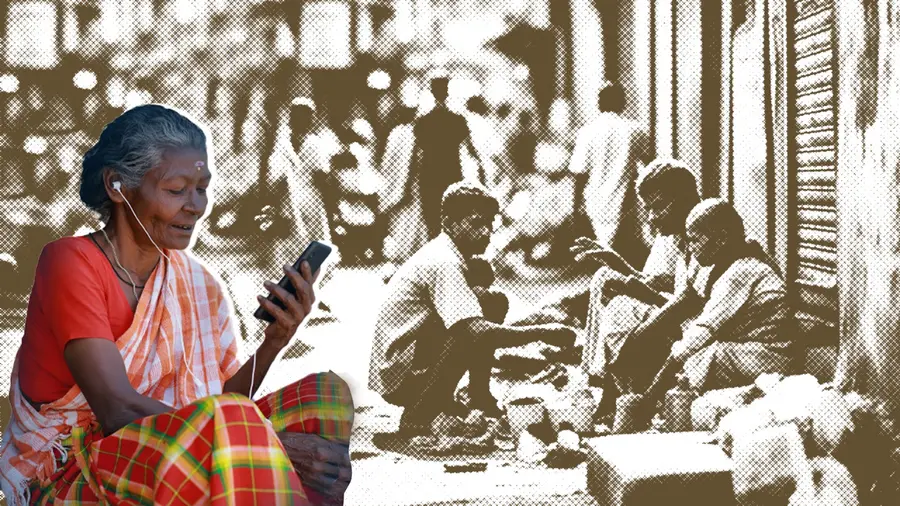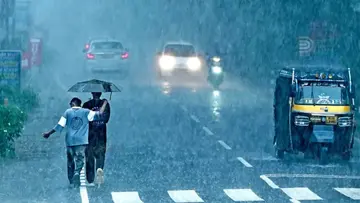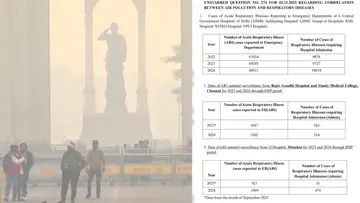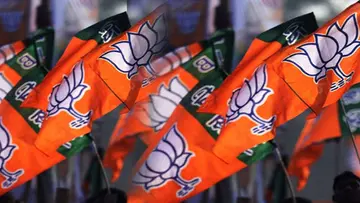Kerala
The Kerala Story: The only Indian State to End Extreme Poverty in 77 Years

Anusha Paul
Published on Apr 21, 2025, 08:06 PM | 13 min read
In a world where digital technology is often seen as the domain of the young, in Kerala, 70 year old Sarasu is the ambassador of DIGI Keralam Project, an initiative, launched by the State Government, to make Kerala a fully digitally literate state.
Sarasu knows everything there is to know about smartphones. From understanding the technical workings of smartphones to using them for internet-based activities like paying bills, making bank transactions, and filing applications for various state-provided benefits, she has an exceptional understanding of how to use mobile phones. She is also good at using social media and wants to start her own YouTube channel, "Sarasuvinte Lokam" (Sarasu’s World). With newfound skills she acquired in her late 60s, Sarasu is proving that age is not a barrier to learning and innovation—so long as they have a quality of life free from extreme poverty and suffering.
A resident of Pullanpara village in Thiruvananthapuram district, India's first fully digital literate village, Sarasu was battling depression until a couple of years ago, after the loss of her husband and son, who committed death by suicide. Without a proper shelter, battling worsening physical and mental health, and no one to turn to, Sarasu was trapped in a cycle of poverty and isolation, unable to support herself or find any means of help.
From a senior citizen in poverty struggling with depression to an energetic, lively senior woman with dreams of becoming a YouTuber, Sarasu’s transformation is a result of Kerala’s extreme poverty eradication project. When the Left Democratic Front (LDF) was about to contest for another term in 2021, before they went on to do so, the then Finance Minister Dr. Thomas Issac presented his final budget, reciting a poem written by Sneha, a class seventh student from Palakkad District.
The poem, which spoke about a future overcoming the crisis posed by Covid-19—a period that had doubled poverty levels in India— a young girl child’s dream of a better world. Drawing from this, Dr. Issac placed his last proposal as Finance Minister, which was also the priority number one in the election manifesto of the LDF, to establish a multilayered approach to eradicate poverty from the state.
After returning to power—a first in Kerala’s history, where a political party won consecutive elections—the LDF government, in its first cabinet meeting held on May 20, 2021, announced its top priority: the eradication of poverty. As part of its broader socialist policy approach, the government led by the Communist Party of India (Marxist) (CPI(M)) launched the Extreme Poverty Eradication Project.
"The primary responsibility of the government is to improve the quality of life of the people. The aim of the new government is to bring those living in poverty above the below poverty line. This will be achieved in the next five years," said Chief Minister Pinarayi Vijayan while addressing the media after the cabinet meeting.
Five years later, while inaugurating a program celebrating his own constituency, Dharmmadom, becoming the first in the country to be declared free of extreme poverty, Pinarayi announced that, as of April 15, 2025, 78.74% of those identified as living in extreme poverty had been successfully uplifted. He also stated that by November 1, 2025—when Kerala will mark its 69th year—extreme poverty would be fully eradicated across the state.
Over the past four decades, Kerala has made significant progress in reducing its poverty rate. In 1973–74, the poverty rate stood at 59.8%, which dropped to 25.4% by 1993–94 and further declined to 11.3% in 2011–12. These improvements placed Kerala ahead of all other Indian states in poverty-related indicators.
Despite this progress, a small section of the population continued to live in conditions of extreme poverty. While several welfare initiatives such as Ashraya (Asylum) and Agathirahitha Keralam (Destitute-Free Kerala) were already in place, they were not sufficient to reach every vulnerable section. This gap highlighted the need to clearly define what constitutes extreme poverty, in order to identify and support individuals and households who had previously remained outside the reach of existing state-sponsored programs.
Factors such as poor health conditions affecting individuals and households, food insecurity, lack of rights, landlessness, inadequate shelter, irregular income, disability, old age, and the absence of livelihood opportunities all contributed to the cycle of poverty. In many cases, it was not a single issue but a combination of multiple conditions that reinforced and perpetuated extreme poverty.
For marginalised communities such as the Scheduled Castes, Scheduled Tribes, and Fisher Folks, the conditions also included the remoteness of their residences, low levels of education, malnutrition, and a lack of basic amenities like electricity and drinking water—all of which further deepened their vulnerability and exclusion.
“In order to execute this mission, a unique approach was required. We identified the need for more comprehensive, multidimensional data—richer and more detailed than the data already available—collected at the household level based on specific criteria to accurately identify the extremely poor,” said Sajna, Assistant Director of the Extreme Poverty Eradication Mission. She added, “The Kerala Institute of Local Administration (KILA) conducted several workshops to develop these questionnaires and provided training across all sections under the Department of Local Self-Government, to effectively implement the project.”
What set this data collection drive apart was its strong focus on community participation. Unlike earlier efforts led by higher-level committees through Kudumbashree units, this initiative represented an advanced form of people’s planning. The preliminary list of extremely poor families was prepared through a thorough, participatory process at both local and ward levels, with public involvement crucial to carrying out the survey.
To facilitate this, panchayat-level committees were formed, and at the ward level, teams were assembled —including representatives of each community, political party representatives, Kudumbashree units, NGOs and self-help groups in urban areas, and youth and women organizations.
A list of 1,18,309 families was initially identified. This included families previously excluded from welfare schemes and those living in extremely vulnerable conditions. Based on the recommendations of sub-committees formed at the local level, this was narrowed down to a shortlist of 87,158 families.
Using a specially developed mobile application, trained volunteers visited each of these households to collect detailed information. To ensure accuracy, 20% of the collected data was re-verified by special teams of officials. Based on this, a priority list of 73,747 families was created.
The lists were then reviewed in detail by the respective Gram Sabhas and Ward Sabhas. Following this scrutiny, families found to be ineligible, deceased individuals, and those who were not interested in receiving support were excluded. The revised lists were subsequently approved at the local body level. The final list identified 64,006 extremely poor families, comprising a total of 1,03,099 individuals.
The process of eradication project focused on addressing four major areas of distress: food, health, income, and housing. The data revealed that 21% of the identified families were affected by food insecurity, 24% faced health-related issues including mental and physical disabilities, 15% required safe shelter, and 35% struggled to secure a regular income. It was also found that many families were affected by more than one of these distress factors.
Therefore customised micro plans were developed after assessing each family's specific situation and needs. These plans were finalised by collecting additional details beyond the initial data gathered during the survey. To effectively address the challenges faced by each household, the micro plans were categorised into short-term, medium-term, and long-term interventions.
Short-term plans focused on services and benefits that could be provided immediately, while medium-term plans included support and facilities deliverable within a time frame of three months to two years. In cases where neither short-term nor medium-term plans were feasible, comprehensive long-term plans were created. A total of 56,697 micro plans were prepared and approved for 64,006 extremely poor families.
In the first phase of the project, priority was given to ensuring that each family received access to essential food and medical care. By addressing these two basic needs, the initiative aimed to reduce hunger, malnutrition, and related health issues, thereby improving the overall well-being of families living in extreme poverty.
Mary (name changed) from Kochi Corporation lived with her elderly mother, relying solely on her mother’s welfare pension as they had no regular source of income. Their living conditions were difficult, struggling to afford basic meals, and their home was on the verge of collapse. They were first provided with food kits.
Of the 20,792 families identified as food-insecure, food kits containing essential items were distributed to those able to cook their own meals. For 2,212 families unable to do so, cooked meals were provided through public canteens, community kitchens, people’s hotels and Kudumbashree units and so on.
Although the first year of the project primarily focused on providing food and health assistance, the government recognised the importance of creating sustainable income opportunities for families living in extreme poverty. To address this, the Ujjivanam (Rejuvenation) campaign was launched in October 2023 under the leadership of the Kudumbashree State Mission.
The campaign supported 4,359 out of 5,350 families facing challenges by providing financial assistance and guidance to start their own income-generation. Through job training, access to microfinance, entrepreneurship support, and employment services, family members were able to build skills, create assets, and increase their earning capacity.
Mary and her mother were also provided with financial support through the Ujjivanam campaign, which helped them start a small dish-washing liquid and lotion manufacturing unit. Today, they are self-employed and living independently with greater stability and an improved quality of life, and their house was repaired to make it livable.
A total of 4,049 homes were renovated, while 3,143 new houses provided and 611 plots with housing are still needed. Despite ongoing efforts, land scarcity remains a major obstacle in housing landless and houseless families. As an interim measure, local bodies were allowed to accommodate families in rented homes.
To address the issue, the Manassodithiri Mannu (Soil gifted from the heart) campaign—launched across all districts in January 2025—invites landowners with surplus land to support families listed under the LIFE Mission and Extremely Poor categories. Due to limited funds at the gram panchayat level, block and district panchayats were permitted to step in with financial support.
To help families in need of repairs, the house renovation grant was raised to rupees 2 lakh, benefiting over 6,000 households. So far, 2,926 houses have been built, 597 families have received both land and housing, and 699 families have moved into rented accommodations. The campaign’s second phase is underway, with land being identified and allocated across 151 local bodies—totalling 1,455.5686 cents—to support continued housing efforts.
A 13-year-old child included in the list of the extremely poor faced severe challenges, in Thrissur district. Orphaned at a young age, the child—who is blind and has both physical and mental disabilities, including symptoms of autism and weak legs—was dependent on others for mobility and basic tasks.
The child was living under the care of his maternal great-aunt at her daughter's home in Vellikulangara. The great-aunt, an elderly heart patient, lived in a cramped house provided by the panchayat, along with 10 other family members, including her daughter's family and two children. Caring for the child in such conditions proved extremely difficult. It was under these circumstances that the child was identified and included in the extremely poor list of the panchayat.
The child lacked basic identification documents such as Aadhaar and a ration card. Obtaining an Aadhaar card was particularly challenging due to the absence of fingerprints. However, following special instructions from the District Collectorate, these issues were resolved, and all necessary documents were secured. With the support of the Taluk Civil Supplies Department, a ration card was issued, and provisions were arranged using a designated alternate recipient. Additionally, 21,263 urgent services and essential documents—including Aadhaar cards, ration cards, voter ID cards, health insurance, and social security pensions—were provided through the Avakasham Athivegam (Accelerated Access to Rights) campaign.
The most transformative support came in the form of a pediatric wheelchair and a commode chair with wheels. With this equipment, the child—who had previously been bedridden—was finally able to sit up and move around with assistance. Initially, the family was reluctant to place the child in an institutional care facility. However, given the great-aunt’s deteriorating health and the family’s limited capacity to provide long-term care, they agreed that professional support was in the child’s best interest. With the help of the District Social Justice Office and the Child Welfare Committee, the child was recently admitted to Anugraha Sadan, a specialized care center in Koodappuzha, in Thrissur District.
Additionally, 693 individuals—333 from single-member households and 360 from other families—were relocated to shelter homes, where they were provided with food and medical care. Details of 5,583 children aged between three and 18 years from extremely poor families were shared with the Department of General Education to address their educational needs. For children aged 14 to 16, the department has been providing breakfast, lunch, school uniforms, tuition fees, financial support for study materials, and assistance for participating in arts and sports activities.
One such family benefiting from this broader support effort consists of two daughters, aged 18 and 12. The older daughter has been mentally disabled since birth, requiring her mother to be constantly by her side and preventing her from seeking regular employment. Currently, the mother works as an assistant on the bus of the special school her daughter attends.
The younger daughter, a bright student and talented singer, was the family’s hope for a brighter future. However, the family’s world was shaken when she was diagnosed with eye cancer. The disease led to the removal of one of her eyes, and she is now undergoing treatment at Aravind Eye Hospital for the cancer that has spread to her remaining eye.
It was during a visit to check on the younger daughter's condition that school authorities came face-to-face with the family’s harsh living conditions. The project became a collective effort, with students, teachers, parents, community members, and the Scouts and Guides Koyilandy unit all pitching in to build a house for the family.
Kerala’s Extreme Poverty Eradication Project has shown that deeply rooted social challenges can be addressed not through charity, but through rights-based, people-cantered governance. By rejecting a fragmented welfare model and instead adopting a multilayered, participatory approach, the initiative tackled poverty as a complex, structural issue—intertwined with health, housing, livelihood, dignity, and access to public services.
The stories that emerged—from Sarasu’s journey into the digital world to Mary’s path to self-reliance, and the care provided to vulnerable children—are not isolated examples, but reflections of a larger political and moral commitment. As Kerala marks its 69th anniversary, the state stands on the brink of becoming the first in India to eradicate extreme poverty. In doing so, it also reaffirms the core belief that the Communist Party of India (Marxist) has long upheld: that socialism, rooted in equality, collective responsibility, and social justice, is not just an ideology—but a viable and humane alternative.










0 comments